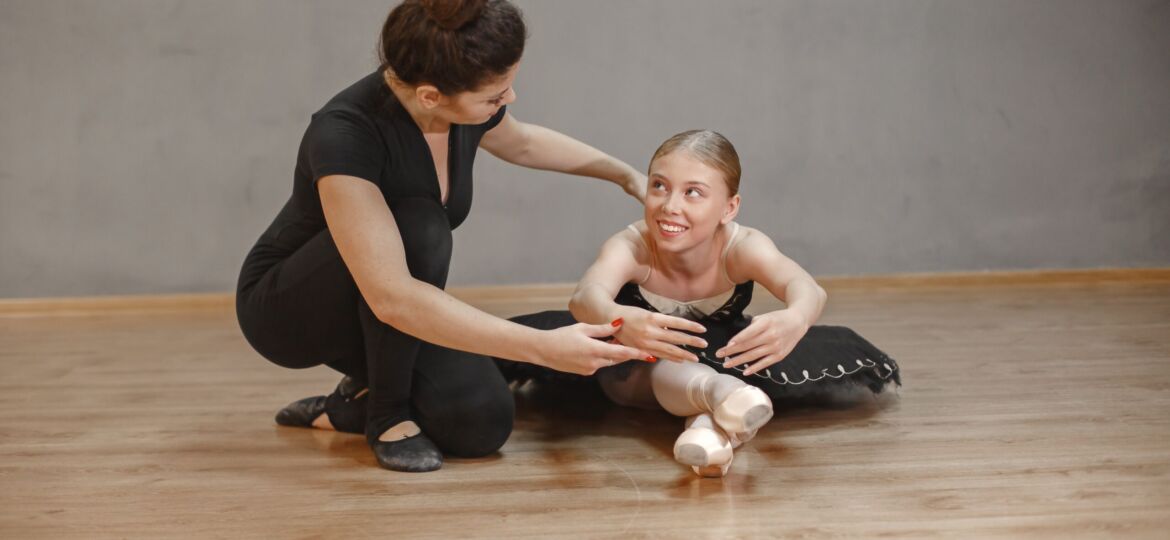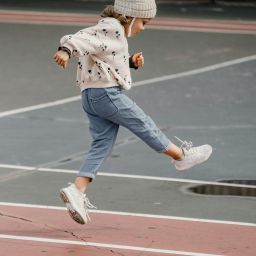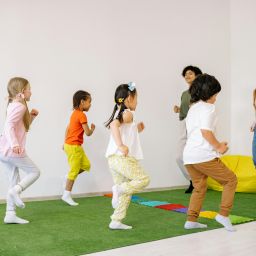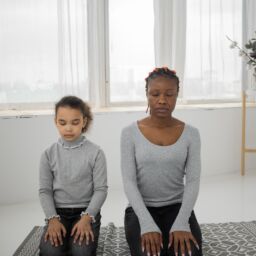
FH Summary: This post emphasizes the importance of teaching children recovery strategies, such as breathing exercises, stretching, and visualization, after physical activity. It highlights the role of these techniques in promoting physical and emotional well-being, reducing muscle tension, improving performance and managing stress. By instilling these First Habits from a young age, children can experience long-term benefits and an upward trajectory in their physical fitness goals.
Physical fitness is rightly hailed as a cornerstone of any child’s development and should be a priority for all parents. In our child development framework there are three main pillars – physiological health, cognitive skill and emotional wellbeing. Exercise and physical activity are a very important part of the first pillar, physiological health. This pillar is even more important in our modern age because, as we know, much of today’s culture encourages a sedentary lifestyle through numerous temptations for our children like phones, television and video games. These temptations are competing against time spent doing physical activities or being outside and enjoying nature.
While encouraging our children to be active, we often emphasize strength, endurance and agility. But have you ever stopped to consider the importance of what happens immediately after these active phases? Just as crucial as the exercise itself is the recovery period, a phase often neglected until a later age when organized sport training begins. The role of rest, breathing exercises, stretching, and visualization must be emphasized in a way that develops these important First Habits from a young age.
At First Habits, we’re committed to helping parents like you instill beneficial habits in your children’s lives. We believe that good habits create what we term an “upward spiral,” (more on that here) a positive feedback loop where one beneficial habit promotes another. Conversely, unintentional or detrimental habits can lead to a “downward spiral.” Understanding and teaching recovery strategies, including breathing, stretching, and visualization, are pivotal in putting your child on an upward trajectory so that they can meet their physical performance goals.
While the strategies that we will teach you are not going to turn your child into a physical phenom overnight, research shows that if they deploy these important techniques immediately post exercise they will be in just a little better acclimated than their peers who are completing the same exercises. With that small edge in recovery, they’ll have more stamina and endurance for the next activity while some of their peers may be less well recovered. By pushing themselves further at later points in the active phase, they will then develop additional abilities that they otherwise would not have developed. Even if we’re talking about half a percentage point in overall improvement, when you compound this over every practice and every game throughout a child’s experience, these positive impacts will compound and set your child ahead in their physical fitness goals. What parent would not be happy to see their kid achieve that outcome?
Breathwork: The Cornerstone of Recovery
The breath is a lifeline that sustains us, but it’s also a powerful tool that can enhance our physical and emotional well-being.
James Nestor, in his book Breath: The New Science of a Lost Art, posits, “The way you breathe directly affects the chemistry of your brain.” Hence, when we teach children to control their breathing, particularly after physical exertion, we equip them with a critical tool for managing their body and mind. By focusing on the breath immediately after physical exertion, your child can learn to lower their heartbeat which will put less strain on their body and allow them to be more rested as they prepare for the next phase of the activity. A focused breathing pattern will also allow the recovery-focused system of your body to quickly turn on rather than the “fight or flight” system that might be engaged during intense physical activity. Rather than huffing and puffing and gasping for air, your child will be taking controlled and measured breaths and actively thinking about their recovery.
Take, for instance, Sarah, who decided to introduce her soccer-loving son to post-practice breathing exercises. Her son was initially resistant, but Sarah persevered. After a few weeks, he began to feel a noticeable difference in his recovery time and overall calmness. He soon started applying the same breathing techniques to manage pre-test jitters at school. This simple habit developed for post-exercise recovery sparked an upward spiral, becoming a comprehensive tool for his well-being. See our full blog post on the power of intentional breathing here.
Stretching: The Unsung Hero of Fitness
Stretching is another essential, but often neglected component of the recovery process. It promotes flexibility, improves posture, and aids in muscle recovery. Research1,2,3 suggests that incorporating stretching into your child’s post-exercise routine can reduce muscle tension and increase relaxation. It can also have a positive impact on injury rates and muscle spasms. Creating a habit that focuses your child on stretching immediately following exercise can ensure that they are primed and ready for the next event and that they are reducing their chances of muscle pulls or other negative outcomes that can occur during any physical activity.
For young gymnast Lily, introducing a consistent stretching routine after training significantly reduced her muscle soreness and improved her performance. More importantly, she learned to appreciate her body’s hard work and the importance of treating it kindly, contributing to a healthier body image. Through the power of stretching after practice, she developed a habit that allowed her to be in better health during her season with fewer instances of tweaked muscles or other injuries that would have kept her off the mat and away from the sport she loved. Just think about how an injury that keeps your child out of practice and games for a month might impact their overall trajectory in their sport especially if it happens at a young age when other children are progressing rapidly. If there’s one thing that you can do as a parent to prevent this type of scenario, it’s focused stretching before and after physical activity.
It is important to note that the benefits of stretching and which kinds of stretching lead to improved outcomes seem to be specific to the individual. Further research and professional consultation is necessary to determine what stretching routine would be ideal for you and your child.
Visualization: Painting the Picture of Relaxation
Visualization is a powerful tool that can accelerate recovery and improve performance. It is a mental technique that involves using the imagination to create a mental image or intention. When used correctly, it can aid in muscle recovery and stress reduction.
Young basketball player Ben was struggling with his performance. His coach introduced him to visualization techniques. Each night, Ben would imagine himself executing perfect shots and visualizing a state of complete relaxation post-training. Not only did his game improve, but he also found it easier to unwind and felt more prepared for the next day’s training. Ben also learned that he could practice visualization immediately after an activity, perhaps while stretching, and go back through the things that went right during his session and reinforce those actions in his mind. He would also reflect on how certain things that didn’t go his way could be improved upon at the next opportunity. See our full blog post on the power of visualization here.
Mental Models: Guiding Light in Child Development
The term “mental models” might sound like an esoteric psychological concept, but it is a remarkably effective tool for navigating life’s many challenges. A mental model is an internal representation of external reality that helps us interact with the world. In the context of recovery, the mental model is the understanding that recovery strategies like breathing, stretching and visualization are integral parts of physical activity, not just add-ons. Create a mental model for your child that focuses on the whole of the physical activity being warm-ups, physical activity and then recovery, not just the physical activity itself.
We believe that children who are taught the mental model of post-exercise recovery, including breathwork and visualization techniques, improved their physical fitness and stress management abilities.
Laying the Foundations: Instilling Recovery Habits
Now that we’ve established the importance of these strategies, let’s explore how you can integrate them into your child’s routine.
Step 1: Inform and Inspire
Start by explaining the concept of warm up and recovery to your child. Use examples or metaphors they can understand, like comparing their bodies to a car that needs to warm up the engine prior to driving and stop to refuel and cool down after a long journey.
Step 2: Practice Makes Perfect
Introduce simple, guided breathing exercises and gentle stretching routines. Encourage your child to visualize their muscles relaxing as they breathe and stretch.
Step 3: Build the Mental Model
Reinforce the understanding that recovery is an essential part of physical activity, just as warming up prepares the body for play, and cooling down allows it to reset.
Step 4: Widen the Horizon
As your child gets comfortable with these recovery techniques, encourage them to apply this strategy to other situations. Just as they learned to use breathwork for physical recovery, they can use it to manage stress or deal with challenging situations.
Creating an Upward Spiral: The Role of First Habits
The road to holistic child development is long and winding, and each step is crucial. The habits we cultivate in our children, such as focusing on recovery strategies, can set them on an upward spiral, creating a domino effect of positivity and growth in their lives.
At First Habits, we strive to provide resources and guidance to help you instill a range of positive habits in your children. Our website offers a treasure trove of research-backed information, and we invite you to sign up for our weekly newsletter for insights into the most important habits and techniques to instill in your children. Also, we would love to hear from you! Do you have kids who are trying out these techniques? What techniques have worked for your child?
- Stretching before and after exercise: effect on muscle soreness and injury risk” by Herbert RD, Gabriel M. (2002) – This review study examined the effects of stretching before and after exercise on muscle soreness and injury risk. The findings suggested that stretching before exercise may not prevent muscle soreness or reduce the risk of injury significantly. However, stretching after exercise could be beneficial in slightly reducing muscle soreness and improving recovery.
- The role of stretching in rehabilitation” by Page P, Frank C, Lardner R. (2012)This comprehensive review explored the role of stretching in rehabilitation. The authors concluded that stretching is beneficial for increasing flexibility, enhancing joint range of motion, and promoting muscular relaxation, all of which can aid in the recovery process after physical performance. The benefits of stretching and which kinds of stretching had given outcomes seemed to be specific to the individual.
- While some studies suggest that stretching may have positive effects on recovery, it’s important to note that the specific benefits of stretching can vary depending on the type of stretching (static, dynamic, PNF, etc.), the context in which it is performed, and individual factors. Always consult with a qualified healthcare professional or trainer before incorporating any stretching or recovery routine into your exercise regimen.






